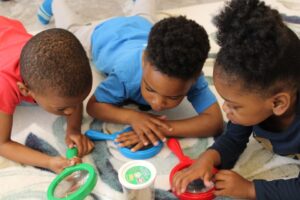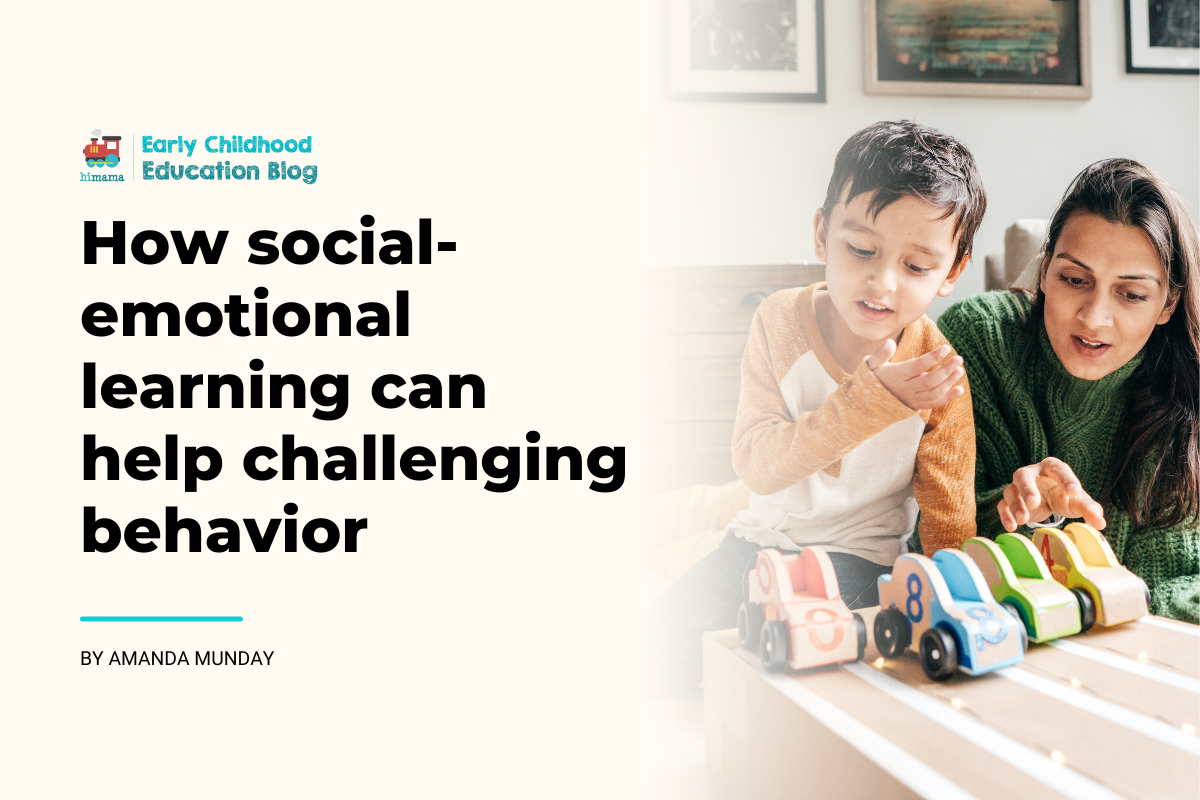Often times, children who exhibit challenging behavior in the classroom have difficulty when it comes to dealing with social and emotional situations.
Educators and parents sometimes have a tendency to “punish” a child rather than address the root causes of their challenging behavior: difficulties in expressing feelings, social interactions and controlling their actions.
Some of the most common social and emotional challenges children face in childcare and school setting include:
- Difficulty interacting with peers and educators
- Inability to pick up on social cues
- Trouble understanding non-verbal communication
- Challenges in managing emotions and expressing them
- Regulating their own behavior

Unfortunately, these problems can have an impact on a child’s ability to learn and develop the critical skills they need to be successful as they grow. In the same way that we teach math, reading, science, and music, we must teach the social-emotional skills children need to regulate their behavior and feelings.
Improving challenging behavior with social-emotional learning
Teaching social-emotional skills to preschoolers is an effective strategy for managing and reducing challenging behavior. Fortunately, teaching social-emotional learning (SEL) skills in the classroom doesn’t mean singling out children with behavioral issues. All children can benefit from SEL, so integrating concepts into your curriculum and daily routines is a smart idea.
The following are just a few ideas for managing challenging behavior in the classroom by introducing opportunities for social-emotional learning:
- Ensure your daily routine involves combinations of small group and large group activities to provide varied types of social interactions.
- Provide a consistent classroom schedule so children can establish routines that involve positive social interactions. Routines can also prevent occurrences of challenging behavior.
- Implement activities that encourage cooperative play to build friendship skills, such as cooperative use of toys, dramatic play materials, and board games.
- Model positive behavior and relationships between educator and parent, educator and child, and educator and coworkers.
- Ask parents to get involved in teaching social-emotional skills at home by modeling positive behavior, building a trusting relationship with their child, and offering positive encouragement where appropriate.
- When a child is experiencing negative emotions, give them the opportunity to express his or her feelings. Help them understand that these emotions are a normal part of life.

There are many strategies for integrating SEL into the preschool classroom to help manage challenging behavior and help children develop the essential skills they need for the future. For more information on social-emotional learning, check out the following resources from the HiMama Blog:
- How Parents Can Bring Social-Emotional Learning into the Home
- How Social-Emotional Learning Helps Children With Anxiety
- What is Social Emotional Learning in Early Childhood?
- How HiMama Improves Social-Emotional Learning and Development
Photo credit: Daniel Brent Ruyter on VisualHunt.com / CC BY-ND



Social Emotional Learning is really helpful in changing behavior of kids. Thank you for sharing your view on it.